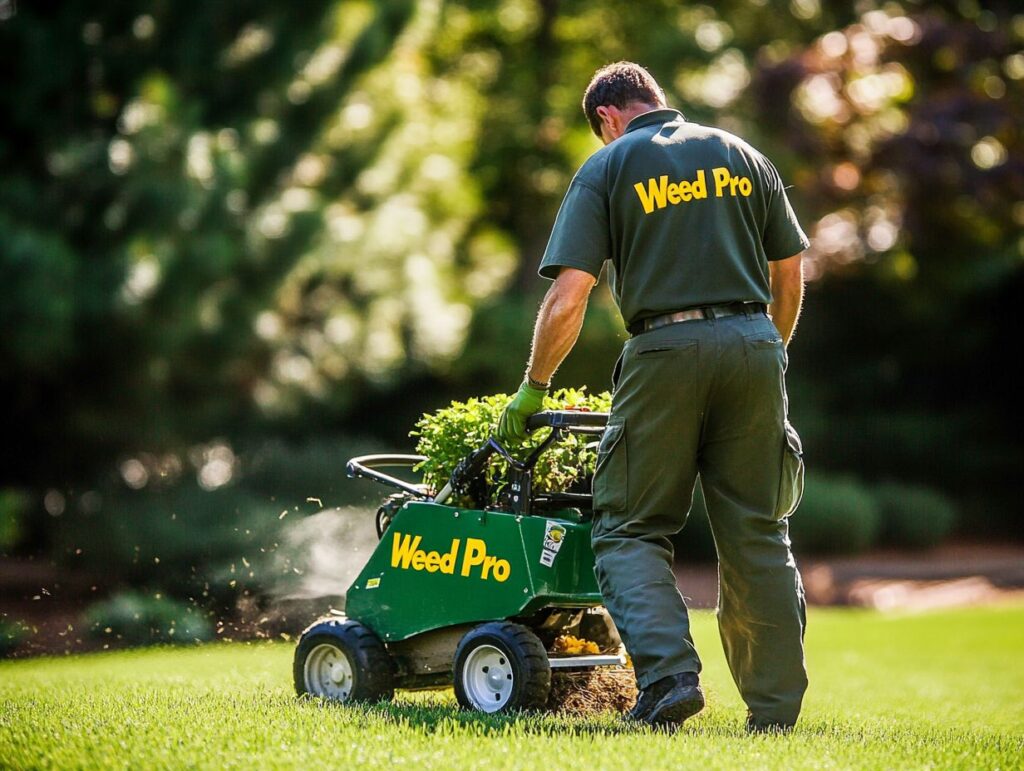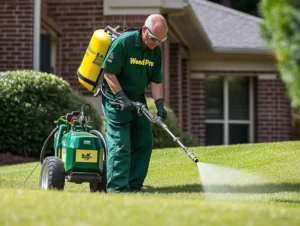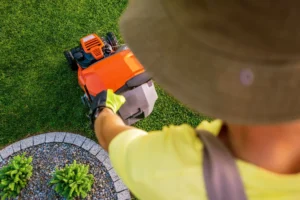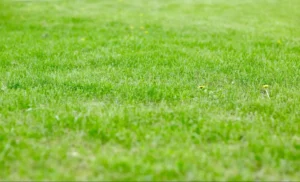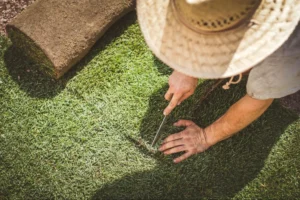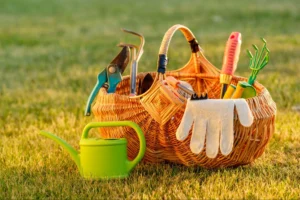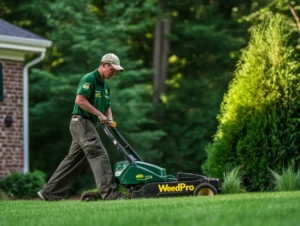Let’s talk turf talk. You’ve mowed the lawn, the grass looks great, and now you’re staring at the aftermath—grass clippings scattered like confetti across your yard. The big question hits: Should you bag them up or let them mulch their way back into the earth?
If you’ve been Googling, “Is mulching better than bagging?” or debating the whole mulch vs. bag situation like it’s a high-stakes game of lawn poker, we’ve got your answer—and then some.
As Weed Pro, Atlanta’s go-to lawn experts, we’re all about helping homeowners make smart, science-backed lawn care decisions. In this guide, we’ll walk you through the benefits and drawbacks of mulching lawn vs. bagging, break down what it means for your turf health, and help you find the method that works best for your yard and lifestyle.
Let’s mulch through this mess, shall we?
The Basics of Bagging and Mulching
Before we dig deeper, let’s get a quick overview of each method:
Bagging Your Lawn Clippings
Bagging means your mower collects grass clippings into a catcher that you later empty (often into a yard waste bin). It gives your lawn that tidy, clean look—and keeps clippings off walkways and driveways.
Mulching Your Lawn Clippings
Mulching involves finely chopping the clippings and leaving them on the lawn to decompose naturally. This method recycles nutrients (especially nitrogen) back into the soil. Your mower needs to be in mulch mode or have a mulching blade to do this right.
Mulching vs Bagging: A Turf Health Comparison
We hear it all the time—“Is mulching better than bagging?” The answer? It depends on your goals.
✅ The Benefits of Mulching:
- Nitrogen Recycling: Grass clippings are rich in nitrogen, and mulching returns this nutrient directly to your lawn—like a mini-fertilizer.
- Moisture Retention: Clippings create a light layer that helps soil hold onto water, especially useful during Atlanta’s dry spells.
- Eco-Friendly Practices: No plastic bags, no hauling to the curb, and way less waste.
- Time Saver: Skip the bag emptying, and you’re shaving time off your weekly mow.
❌ Mulching Drawbacks:
- Doesn’t work well if grass is wet or super tall—it can clump and smother grass.
- May contribute to thatch layer buildup if not done properly or if your mower blades are dull.
- Can look messy if your mower doesn’t cut evenly or if you mow infrequently.
When Bagging Makes More Sense
Let’s not throw bagging under the lawn mower just yet—it has its place in a solid lawn care routine.
✅ The Benefits of Bagging:
- Gives a clean, polished look—perfect before events or HOA inspections.
- Helps remove weeds, seeds, or diseased patches before they spread.
- Useful when you’ve waited a little too long between mows (we’ve all been there).
- Keeps clippings from being tracked into the house or pool.
❌ Bagging Drawbacks:
- Loses valuable nitrogen and organic matter that could benefit your soil.
- Adds time (and physical effort) to your mow with frequent emptying.
- Not great for the environment—those yard waste bags have to go somewhere.
- May require extra fertilizing impact to make up for lost nutrients.
Mulching Grass vs Bagging: What Your Mower Needs to Know
Whether you mulch or bag, your lawn mower settings and blade sharpness play a huge role in success.
For Mulching:
- Use a mulching blade and mulch plug.
- Mow frequently enough that you’re not cutting more than 1/3 of the grass’s height.
- Never mulch wet grass—clumps are your enemy!
For Bagging:
- Keep your catcher clean and empty it often.
- Use higher mower settings if the grass is tall to avoid scalping.
- Switch to mulching during peak growing seasons to give the soil a break.
Pro Tip: In spring and early summer—when the grass is growing fast—alternate between the two. Mulch most of the time, but bag once every few weeks to remove excess debris and balance things out.
Yard Appearance vs. Soil Health
It’s a classic head vs. heart decision. If you want that crisp, green, no-crumbs-left-behind look, bagging might be your jam. But if you’re thinking long-term and want to build up soil nutrients, mulching has your back.
Some homeowners even use both methods in different zones of their yard—mulching in the backyard, where perfection isn’t required, and bagging in the front for that polished curb appeal. Genius.
What About the Thatch Layer?
A big myth is that mulching causes thatch layer buildup. The truth? Grass clippings decompose quickly and actually help prevent thatch by promoting microbial activity—as long as you don’t mow tall grass or let clippings clump.
Thatch comes mostly from stems and roots, not clippings. So go ahead—mulch without fear, especially if you’re mowing regularly and using sharp blades.
Moisture and Fertility: The Bonus Perks of Mulching
Here’s where mulching really flexes its green thumb.
- Decomposition benefits mean clippings break down into the soil, enhancing nutrient content and improving turf health.
- Your lawn becomes less dependent on fertilizers since nitrogen recycling happens naturally.
- Clippings also act as a mini-blanket, slowing water evaporation and supporting moisture retention.
In other words, mulching is the gift that keeps on giving—especially in Atlanta’s heat.
A Quick Guide for Making Your Choice
| Situation | Best Option |
| Weekly mow, dry weather | Mulch |
| Wet grass or overgrown lawn | Bag |
| Want pristine appearance | Bag |
| Focusing on soil health | Mulch |
| Post-weed treatment or disease | Bag |
| Lazy Sunday and hot coffee waiting | Mulch (because less effort!) |
Keep It Simple, Keep It Green
Your yard doesn’t care if you’re Team Mulch or Team Bag—it just wants consistent, thoughtful care. Whether you’re aiming for lush, show-stopping turf or just trying to avoid HOA complaints, your mowing decisions matter more than you think.
Let Weed Pro Help You Mulch (or Bag) Like a Pro
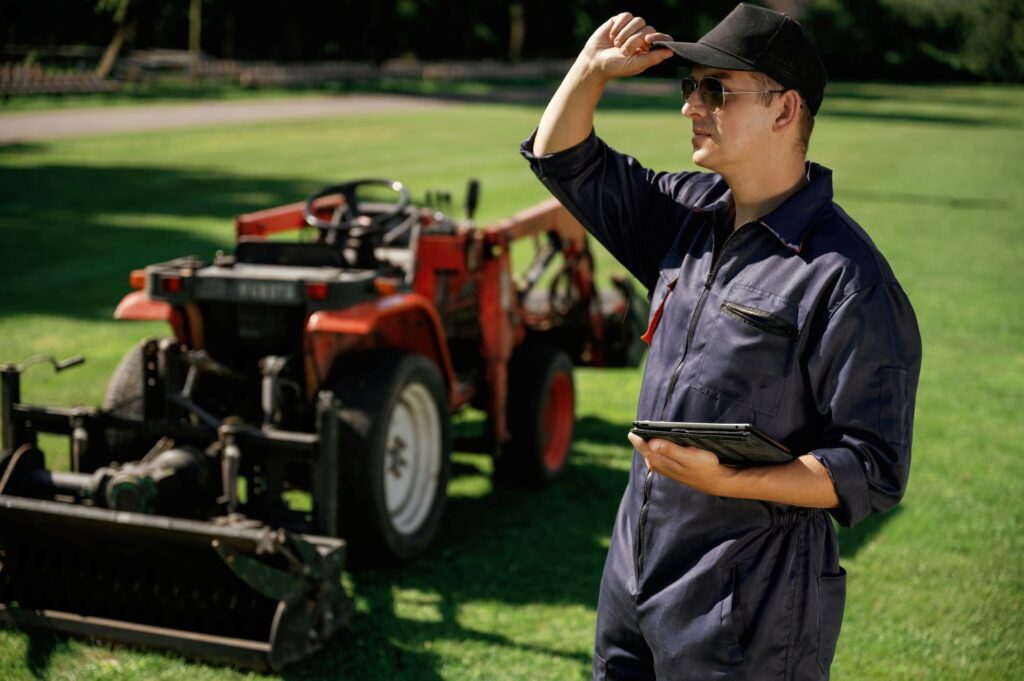
Whether you’re a DIYer who wants to perfect your lawn care technique or someone who’d rather outsource it entirely, Weed Pro is here to guide, treat, and transform your yard into a turf masterpiece. We’ll help you choose the right mowing strategy, balance nutrients, and stay ahead of Atlanta’s wild growing seasons.
Contact us today for a custom lawn analysis, and let’s grow something great.
FAQ: Questions You Might Not Think to Ask
Can you compost bagged grass clippings at home?
Absolutely—but only if they haven’t been treated with herbicides or pesticides. Composting grass clippings helps reduce waste and creates a nutrient-rich amendment for gardens. Be sure to mix clippings with brown materials like leaves or shredded paper to balance nitrogen and carbon levels.
Is there a specific mower height for mulching?
Yes, most mulching works best when you keep your mower set around 2.5 to 3 inches. This height ensures that clippings are small enough to break down quickly without smothering the grass underneath. Adjust slightly based on your grass type and how fast it’s growing.
Do mulched clippings attract pests?
Not if done properly. Healthy, regularly mulched lawns don’t attract pests. Issues arise when clippings are too thick or wet, leading to mold or fungal growth. The key is to mow often and never mulch over soggy or extremely tall grass.
➡️ Up Next: Lawn Care Strategies for Cumming Rental Properties: What Landlords Should Know
Calling all landlords! Your next must-read is “Lawn Care Strategies for Cumming Rental Properties: What Landlords Should Know: What Landlords Should Know.” Whether you’ve got long-term tenants or a revolving door of renters, this article covers how to maintain lawn appeal without losing your mind—or your deposit. Tap in and keep that curb appeal locked down!

